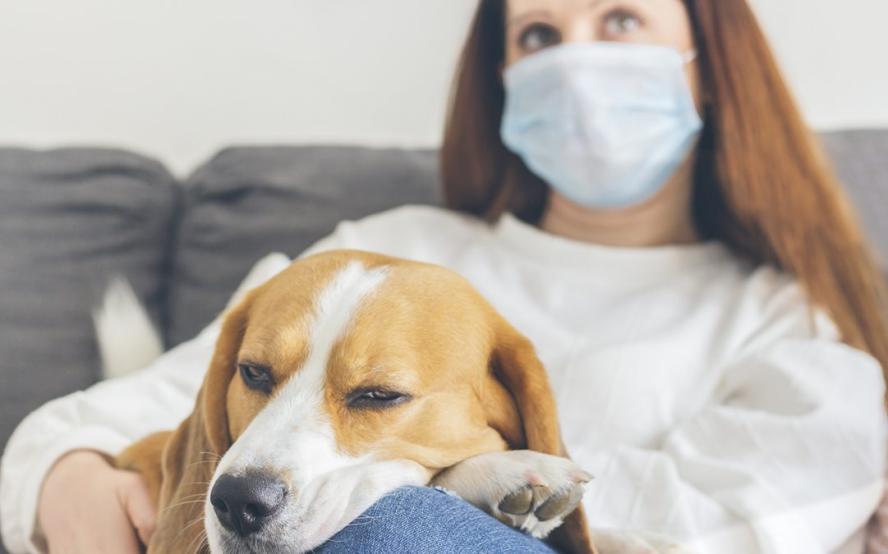-
About
- Leadership & Faculty
- News & Events
-
Academics
- Graduate
- Advanced Clinical Training
- Continuing Education
- Academic Departments
- Academic Offices
- Simulation Experiences
-
Student Life
- Offices
-
Research
-
Hospitals & Clinics
- Emergency Care
- Hospital Services
-
Community Outreach
- Volunteer
Managing Mask Phobia in Dogs
If your dog is fearful of face masks, don’t despair. Behavior modification can help your dog accept the unacceptable masks.

COVID-19 has brought about revolutionary changes in human interactions. With city ordinances requiring us to cover our faces in public, smiles have gone by the wayside. We have been adapting to these changes at lightning speed, but what about our dogs?
Without the ability use language, dogs rely heavily on nonverbal communication. They read human body language and facial expressions better than people do. Things that cover or obscure our faces can be alarming for them—especially when introduced suddenly.
For sensitive pups, neighbors in face masks may inadvertently turn the daily walk into a stroll through a minefield. Some dogs that used to enjoy regular outings may now hide when the leash is produced. Others may bark furiously at the masked “enemies” invading their neighborhood streets.
If your dog is fearful of face masks, don’t despair. With behavior modification, your dog can learn to accept the unacceptable masks.
If your dog is only mildly fearful, counterconditioning may do the trick. To counter-condition your dog, pair something he loves (delicious food or favorite toy) with the presence of what he fears (person in a mask). Over time, he will begin to associate the happy feelings generated by his favorite treat with the appearance of someone in a mask. Instead of barking, he will start to wag his tail at the sight of a masked neighbor and lick his chops in anticipation of something yummy.
If the sight of a person in a mask is so scary that your dog shows no interest in treats or special toys, systematic desensitization is needed along with counterconditioning. With desensitization, the object of his fear must be introduced at a low enough intensity (i.e. at a great enough distance) that the dog is not afraid. Pair the presence of the far away masked person with special food. Very gradually, move your dog closer to the masked person. Continue moving closer and closer until your dog is comfortable taking food right next to the person with the mask.
Once he accepts the masked person, practice again with different people, different masks, and in different locations. Dogs need to practice in many contexts before they generalize what they learn.
The key to effect desensitization and counterconditioning is patience. Keep behavior modification sessions brief (5 minutes). Go slowly enough that the dog never experiences fear. If your dog starts to pant, lick his lips, yawn repeatedly, or turn away during behavior modification, back up and slow down. Think tortoise, not hare.
Veterinarian Dr. Stephanie Borns-Weil heads the behavior service at Cummings Veterinary Medical Center. She is a 2007 graduate of Cummings School of Veterinary Medicine at Tufts University.
Department:
Foster Hospital for Small Animals
